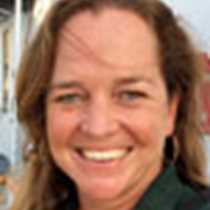Santa Cruz and North Seymour Islands
Tuesdays are always a great highlight for all of us on board Islander here in the Galápagos, as this day is synonymous with that most emblematic of the archipelago’s creatures: the giant tortoise. This magnificent reptile, relic of a past era, evolved from a comparatively small Chilean desert tortoise that must have been swept away by currents after having somehow fallen in the water, and was eventually deposited on the harsh and unwelcoming shores of these remote islands. This original tortoise arrival eventually led to a total of fourteen separate species of giant proportions, each found on a separate island or volcano, arisen due to adaptive radiation and isolation. This is not the only place that this has happened, giant tortoises having evolved completely separately in the Indian Ocean, most of those species now being extinct, with the exception of a large population on the Aldabra Atoll near the Seychelles. In fact, when Charles Darwin came across the giants of the Galápagos, he assumed they were Testudo indicus, the Indian Ocean tortoise that had been brought to the Pacific by past buccaneers or whalers to stock the islands with a readily-available fresh meat source – it would have been fascinating to witness his reaction had he been aware that the two populations had actually evolved completely separately!
Unfortunately, three of the Galápagos species are now extinct, and a fourth has but one remaining representative: the famous Lonesome George of Pinta Island. The earliest and one of the most important conservation programs run by the Charles Darwin Foundation is the captive breeding and repatriation program of these reptiles, that has brought back several populations from the brink of extinction.
We started early today, before breakfast, so as to visit the breeding program in the cool hours of the early morning. All our guests, especially the younger ones, were entranced by close encounters with the curious tortoises from the research station, which came too close even to allow for accurate sketching! We then travelled up into the highlands for breakfast, followed by a couple of different expeditions into National Park areas to find the Santa Cruz tortoise, Geochelone porteri, in the wild. This large island is home to a healthy population of these creatures that migrate between the humid highlands and the dry lowlands during the year. Their quest in the highlands is the dense vegetation and abundance of freshwater pools they can wallow in, sharing these rare and valuable fresh waters reservoirs with some of the islands’ bird species, such as the white-cheeked pintail ducks (Anas bahamensis). An unforgettable experience that has inspired us to support the Foundation in their incessant endeavours to save these animals – who really wants to live in a world without oddities such as giant tortoises?
Tuesdays are always a great highlight for all of us on board Islander here in the Galápagos, as this day is synonymous with that most emblematic of the archipelago’s creatures: the giant tortoise. This magnificent reptile, relic of a past era, evolved from a comparatively small Chilean desert tortoise that must have been swept away by currents after having somehow fallen in the water, and was eventually deposited on the harsh and unwelcoming shores of these remote islands. This original tortoise arrival eventually led to a total of fourteen separate species of giant proportions, each found on a separate island or volcano, arisen due to adaptive radiation and isolation. This is not the only place that this has happened, giant tortoises having evolved completely separately in the Indian Ocean, most of those species now being extinct, with the exception of a large population on the Aldabra Atoll near the Seychelles. In fact, when Charles Darwin came across the giants of the Galápagos, he assumed they were Testudo indicus, the Indian Ocean tortoise that had been brought to the Pacific by past buccaneers or whalers to stock the islands with a readily-available fresh meat source – it would have been fascinating to witness his reaction had he been aware that the two populations had actually evolved completely separately!
Unfortunately, three of the Galápagos species are now extinct, and a fourth has but one remaining representative: the famous Lonesome George of Pinta Island. The earliest and one of the most important conservation programs run by the Charles Darwin Foundation is the captive breeding and repatriation program of these reptiles, that has brought back several populations from the brink of extinction.
We started early today, before breakfast, so as to visit the breeding program in the cool hours of the early morning. All our guests, especially the younger ones, were entranced by close encounters with the curious tortoises from the research station, which came too close even to allow for accurate sketching! We then travelled up into the highlands for breakfast, followed by a couple of different expeditions into National Park areas to find the Santa Cruz tortoise, Geochelone porteri, in the wild. This large island is home to a healthy population of these creatures that migrate between the humid highlands and the dry lowlands during the year. Their quest in the highlands is the dense vegetation and abundance of freshwater pools they can wallow in, sharing these rare and valuable fresh waters reservoirs with some of the islands’ bird species, such as the white-cheeked pintail ducks (Anas bahamensis). An unforgettable experience that has inspired us to support the Foundation in their incessant endeavours to save these animals – who really wants to live in a world without oddities such as giant tortoises?




